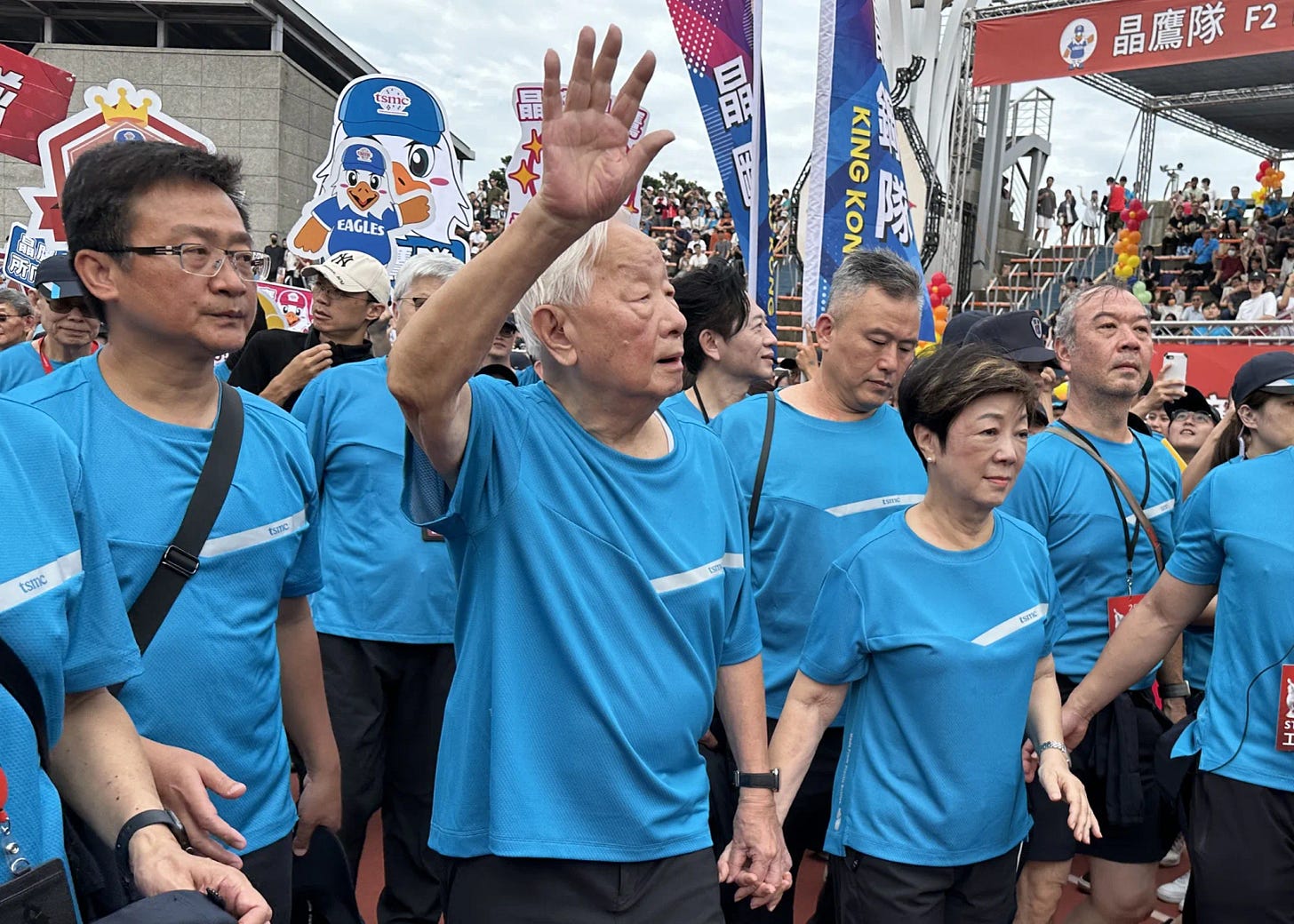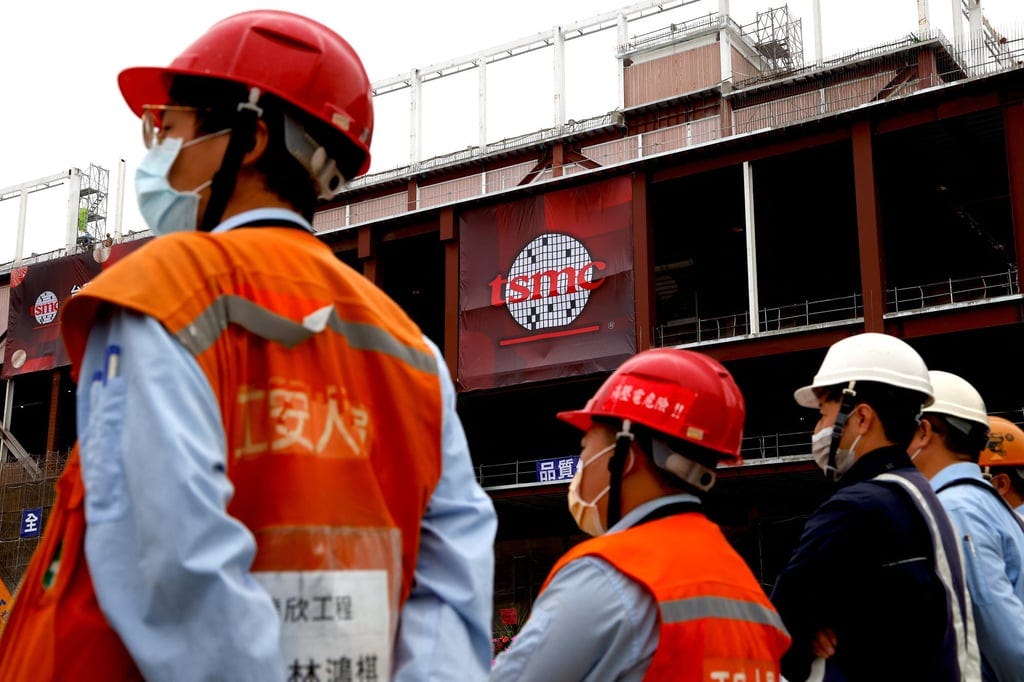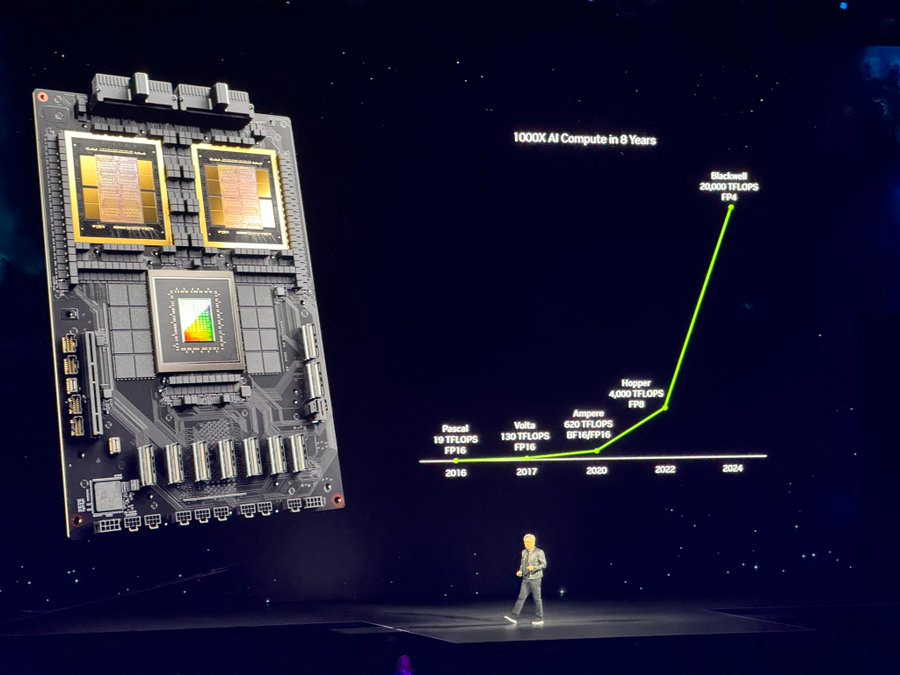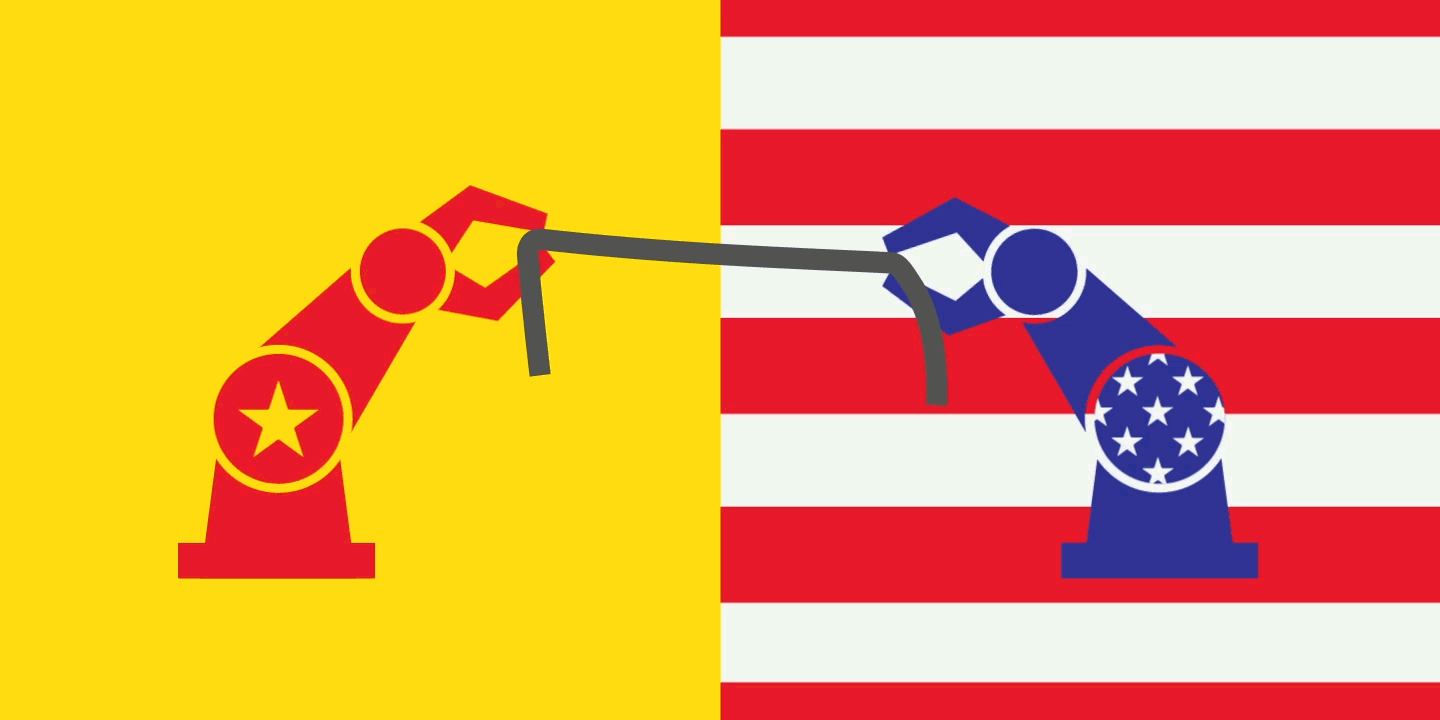AI: Fuzzy stakes for Taiwan's TSMC. RTZ #523
...big challenges despite booming global AI chip demand
Some good and bad news out of TSMC in Taiwan, on whose fabs lies the current fate of this AI Tech Wave. As regular readers know, TSMC produces most of the chips, AI and non-AI, that drive the ‘fabless’ prosperity of the largest US technology companies.
They of course include everyone from Nvidia to Apple to Google to Microsoft/OpenAI to Meta to Tesla and far beyond. A majority of the world’s critical chip supply, despite aggressive efforts by TSMC, the US and others to nudge production fabs to ramp up here and beyond.
The bad news of course focuses on the ongoing US/China geopolitical tussles I discussed yesterday.
As Bloomberg reports, “TSMC Faces Severe Challenges as Free Trade Falters, Founder Says”:
“Taiwan Semiconductor Manufacturing Co.’s founder Morris Chang said the the company will soon face its “most severe” challenges in driving growth at a time that the US is controlling the flows of cutting-edge chips to China.”
“TSMC is now truly a turf all major powers want to secure,” Chang said at a company event in Hsinchu on Saturday, amplifying a concept he first raised in 2019. “Free trade of semiconductors, particularly the most advanced semiconductors, has died. In such an environment, our challenge lies in how to continue to drive growth.”
“The go-to chipmaker for Apple Inc. and Nvidia Corp., TSMC makes 99% of the world’s AI accelerators. The company is expected to book record revenue this year on robust artificial intelligence demand and its share price has almost tripled in value since late 2022 following OpenAI’s launch of ChatGPT.”
The broader political picture portrays a comnpany caught between a rock and a hard place:
“The Taiwanese company is restricted from making the most powerful artificial intelligence semiconductors for Chinese customers as the US works with allies including Japan and the Netherlands to restrict China’s access to cutting-edge chips and equipment. China still accounts for more than 10% of TSMC’s revenue.”
“When the Chinese tech champion Huawei Technologies Co. was still a TSMC customer before 2020, the Taiwanese chipmaker even relied on China for about 20% of its sales at one point.”
“TSMC stopped shipping to Huawei in September 2020 after the US banned all chipmakers using even the tiniest amount of American technology from doing business with the Shenzhen-based tech firm without Washington’s approval.”
“TSMC said earlier this week that it is committed to complying with all applicable rules and regulations and it had proactively communicated with the US Commerce Department. It reiterated it had not supplied to Huawei since mid-September 2020.”
The whole piece is worth reading for its fuller details on TSMC’s challenges despite record demand for the company’s products.
So what’s the good news one might ask. As the South China Morning Post reports, “TSMC’s Arizona chip plant outperforms Taiwan’s, boosting US drive”:
“Taiwan Semiconductor Manufacturing Company (TSMC) has achieved early production yields at its first plant in Arizona that surpass similar factories back home, a significant breakthrough for a US expansion project initially dogged by delays and worker strife.”
“The share of chips manufactured at TSMC’s facility in Phoenix that are usable is about 4 percentage points higher than comparable facilities in Taiwan, Rick Cassidy, president of TSMC’s US division, told listeners on a webinar Wednesday, according to a person who took part. The success rate, or yield, is a critical measure in the semiconductor industry because it determines whether companies will be able to cover the enormous costs of a chip plant.”
“The accomplishment is a sign of progress for Washington’s efforts to revitalise American semiconductor manufacturing. TSMC, the main chip manufacturing partner for Nvidia and Apple, is in line to win US$6.6 billion in government grants and US$5 billion in loans – plus 25 per cent tax credits – to build three fabrication facilities, or fabs, in Arizona. The award, like almost all others from the 2022 Chips and Science Act, is not yet finalised.”
“Our first fab entered engineering wafer production in April with 4-nanometer process technology, and the result is highly satisfactory, with a very good yield,” he said at the time. “This is an important operational milestone for TSMC and our customers, demonstrating TSMC’s strong manufacturing capability and execution.”
Of course it’s not all good news:
“The two other chip makers at the heart of the Biden administration’s tech strategy, Intel and Samsung Electronics, have struggled in recent months. Intel, slated to be the biggest beneficiary of the Chips Act, is under such severe financial pressure that it is delaying global projects and considering selling assets.”
And of course TSMC’s US facilities have yet to ramp at scale. But the news to date is a welcome first step:
“The latest yield advancement is notable for TSMC because it has historically kept the most advanced and efficient plants in its home island of Taiwan. Its Arizona site got off to a rocky start, as the company could not find enough skilled staff to install advanced equipment and workers struggled with safety and management issues. TSMC reached an accord with construction trade unions late last year.”
“The chip maker originally planned to have its first Arizona plant start full production in 2024, but pushed back the target to 2025 over the labour issues. It later delayed the start date for its second fab to 2027 or 2028, from an initial target of 2026. That fuelled concerns that the company might not be able to make chips in the US as efficiently as in Taiwan.”
“TSMC could now be keen to expand its US presence further, depending in part on the possibility of more government backing, Cassidy added, citing early conversations in Washington about a second Chips Act. There is room for at least six total fabs at the Phoenix complex.”
All this is to emphasize that chip production at scale anywhere is a multi-year process, with billions being committed half a decade and more in advance. The US and China of course continue ‘threading the needle’ on their relationship between geopolitics and tech/AI trade.
And the acceleration pace of the AI Tech Wave continues to hang in the balance. Stay tuned.
(NOTE: The discussions here are for information purposes only, and not meant as investment advice at any time. Thanks for joining us here)







